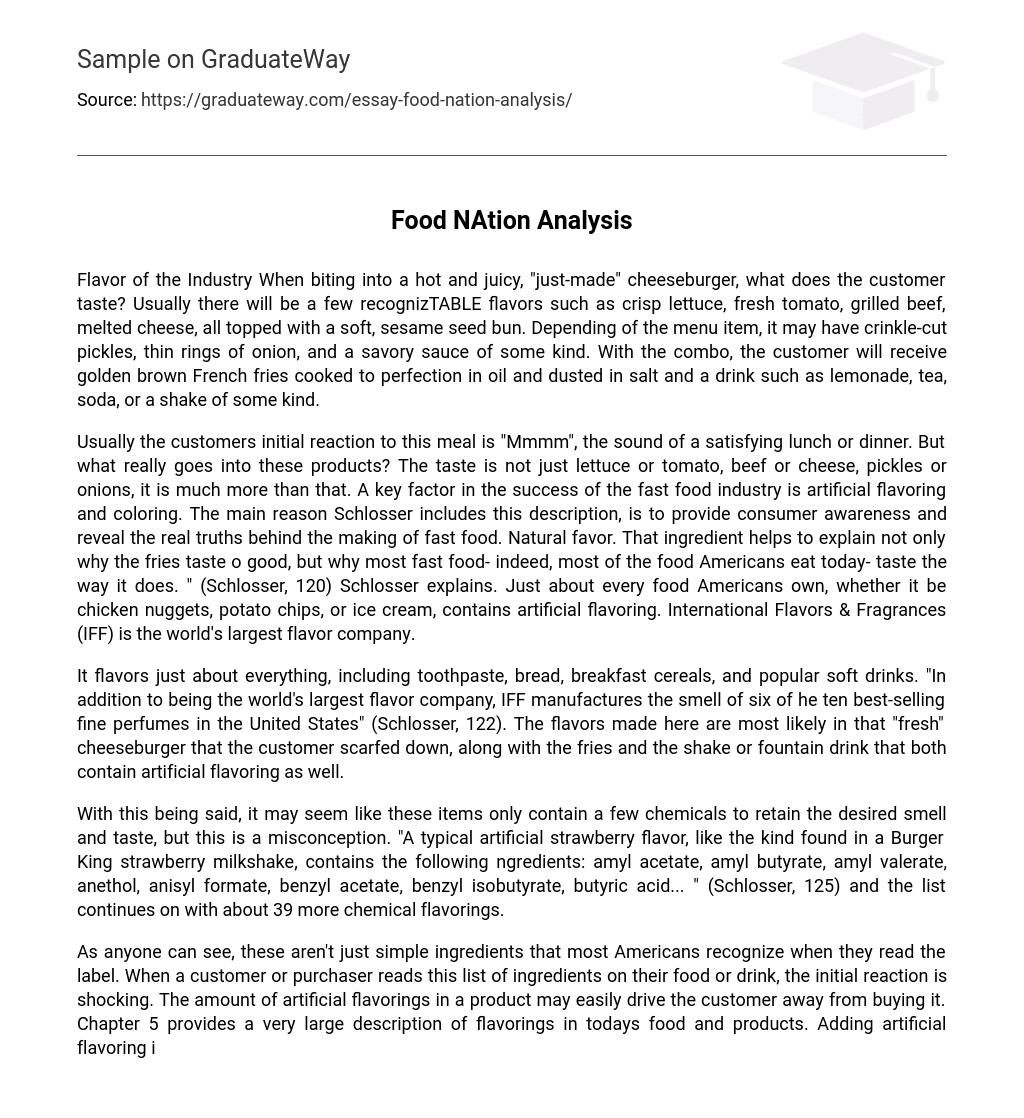Flavor of the Industry When biting into a hot and juicy, “just-made” cheeseburger, what does the customer taste? Usually there will be a few recognizTABLE flavors such as crisp lettuce, fresh tomato, grilled beef, melted cheese, all topped with a soft, sesame seed bun. Depending of the menu item, it may have crinkle-cut pickles, thin rings of onion, and a savory sauce of some kind. With the combo, the customer will receive golden brown French fries cooked to perfection in oil and dusted in salt and a drink such as lemonade, tea, soda, or a shake of some kind.
Usually the customers initial reaction to this meal is “Mmmm”, the sound of a satisfying lunch or dinner. But what really goes into these products? The taste is not just lettuce or tomato, beef or cheese, pickles or onions, it is much more than that. A key factor in the success of the fast food industry is artificial flavoring and coloring. The main reason Schlosser includes this description, is to provide consumer awareness and reveal the real truths behind the making of fast food. Natural favor. That ingredient helps to explain not only why the fries taste o good, but why most fast food- indeed, most of the food Americans eat today- taste the way it does. ” (Schlosser, 120) Schlosser explains. Just about every food Americans own, whether it be chicken nuggets, potato chips, or ice cream, contains artificial flavoring. International Flavors & Fragrances (IFF) is the world’s largest flavor company.
It flavors just about everything, including toothpaste, bread, breakfast cereals, and popular soft drinks. “In addition to being the world’s largest flavor company, IFF manufactures the smell of six of he ten best-selling fine perfumes in the United States” (Schlosser, 122). The flavors made here are most likely in that “fresh” cheeseburger that the customer scarfed down, along with the fries and the shake or fountain drink that both contain artificial flavoring as well.
With this being said, it may seem like these items only contain a few chemicals to retain the desired smell and taste, but this is a misconception. “A typical artificial strawberry flavor, like the kind found in a Burger King strawberry milkshake, contains the following ngredients: amyl acetate, amyl butyrate, amyl valerate, anethol, anisyl formate, benzyl acetate, benzyl isobutyrate, butyric acid… ” (Schlosser, 125) and the list continues on with about 39 more chemical flavorings.
As anyone can see, these aren’t just simple ingredients that most Americans recognize when they read the label. When a customer or purchaser reads this list of ingredients on their food or drink, the initial reaction is shocking. The amount of artificial flavorings in a product may easily drive the customer away from buying it. Chapter 5 provides a very large description of flavorings in todays food and products. Adding artificial flavoring into products originates in the 1900’s.
However, these were man-made flavors additives that were most specifically used for baked goods, candies, and sodas until the 1 950s. Once sales began to increase, artificial coloring was added to almost everything. Schlosser helps recognize the amount of artificial flavorings in today’s fast food and lays out awareness for people who have never looked into the ingredients in that Cheesebu rger they ate the other day.





